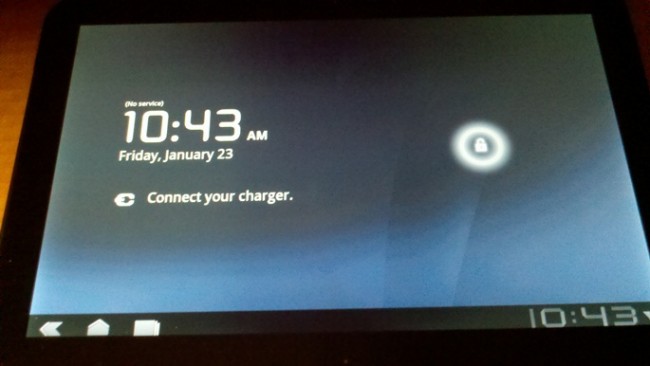
We have been covering the new Motorola tablet here at AndroidStory since it was seen in Andy Rubin’s hands at Dive Into Mobile. Motorola unveiled their “History of the Tablet” yesterday, and a countdown timer today.  Yesterday over at the Android Developers Blog, Nick Kralevich wrote a great piece – “It’s not ‘rooting’, it’s openness.”
In it he discussed the difference between using fastboot oem unlock and finding holes in the security in order to open your device:
Legitimately gaining root access to your device is a far cry from most rooting exploits. Traditional rooting attacks are typically performed by exploiting an unpatched security hole on the device. Rooting is not a feature of a device; rather, it is the active exploitation of a known security hole.
What do these two have to do with one another? Â Simple, Motorola and Google have an opportunity to actively work together to maintain a similar option for the very first (this is my guess) Honeycomb tablet. Â As Motorola stated after the e-fuse debacle:
“Securing the software on our handsets, thereby preventing a non-Motorola ROM image from being loaded, has been our common practice for many years. This practice is driven by a number of different business factors. When we do deviate from our normal practice, such as we did with the DROID, there is a specific business reason for doing so. We understand this can result in some confusion, and apologize for any frustration.” source

This is a chance for us to possibly make our voices heard – most likely not to Motorola who consistently denies our desires, but instead to Google who just yesterday stated:
Unfortunately, until carriers and manufacturers provide an easy method to legitimately unlock devices, there will be a natural tension between the rooting and security communities. We can only hope that carriers and manufacturers will recognize this, and not force users to choose between device openness and security. It’s possible to design unlocking techniques that protect the integrity of the mobile network, the rights of content providers, and the rights of application developers, while at the same time giving users choice. Users should demand no less.
I am unsure what the specific business factors were included in the dealings for the OG Droid, however I would hope that it had something to do with Google, and that Google could once again flex its muscles to provide users and developers the resources that we are all absolutely dying for. Â As it stands right now, I feel it is much more likely that if the Motorola tablet does offer all that I’ve read and written about in the past, Verizon Wireless and content providers are at a much higher risk of issues due to finding an exploit to open the tablet up to users. Â The best course of action for Android, Verizon, Motorola, and Google would be to offer this tablet with the ability to easily either fastboot oem unlock or at the very least allow an easy (non-exploit) path to root and add custom ROMs.









